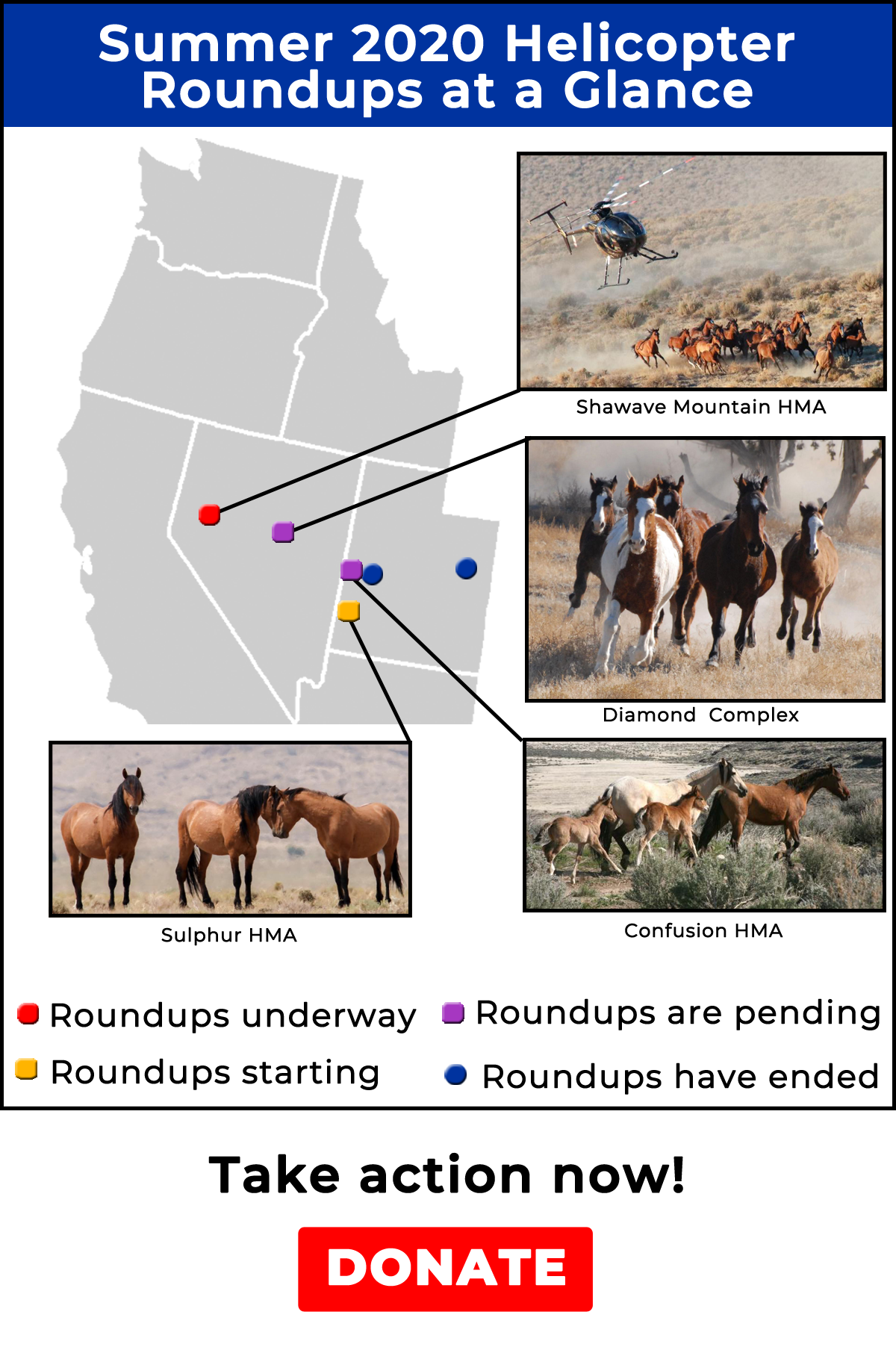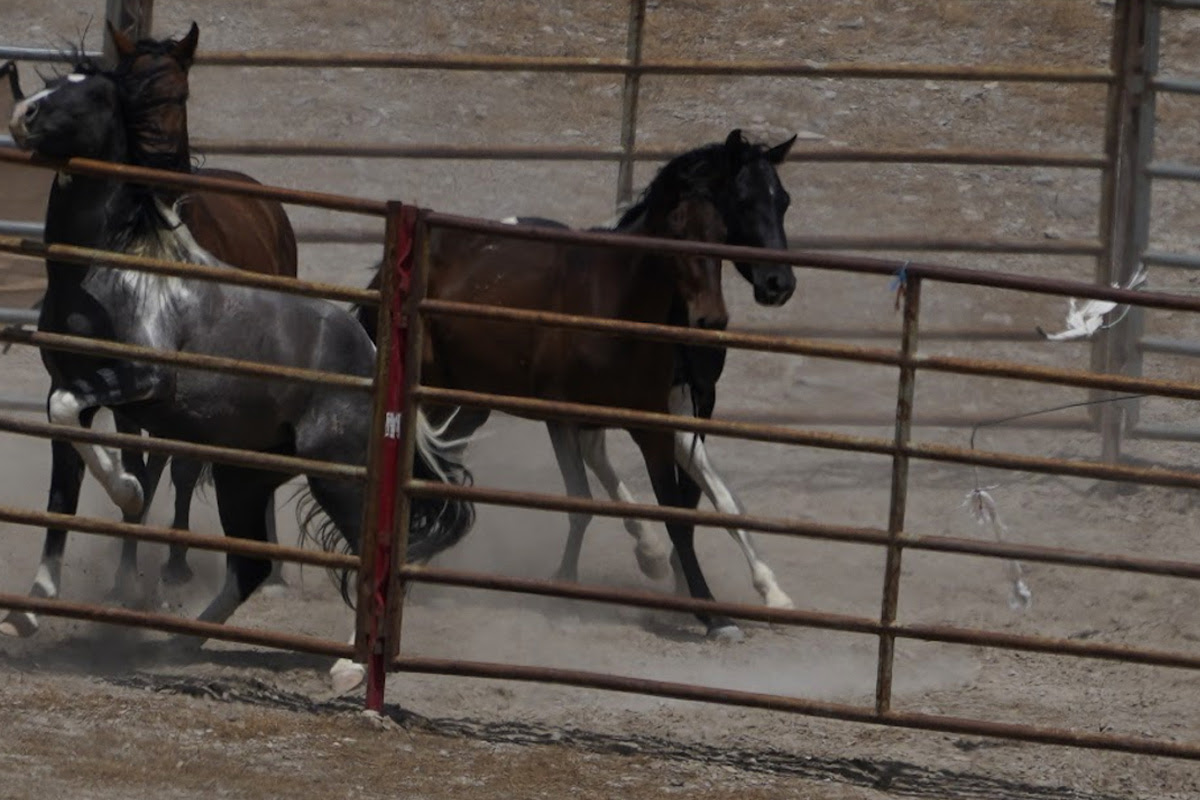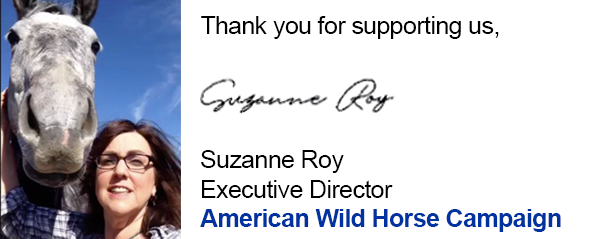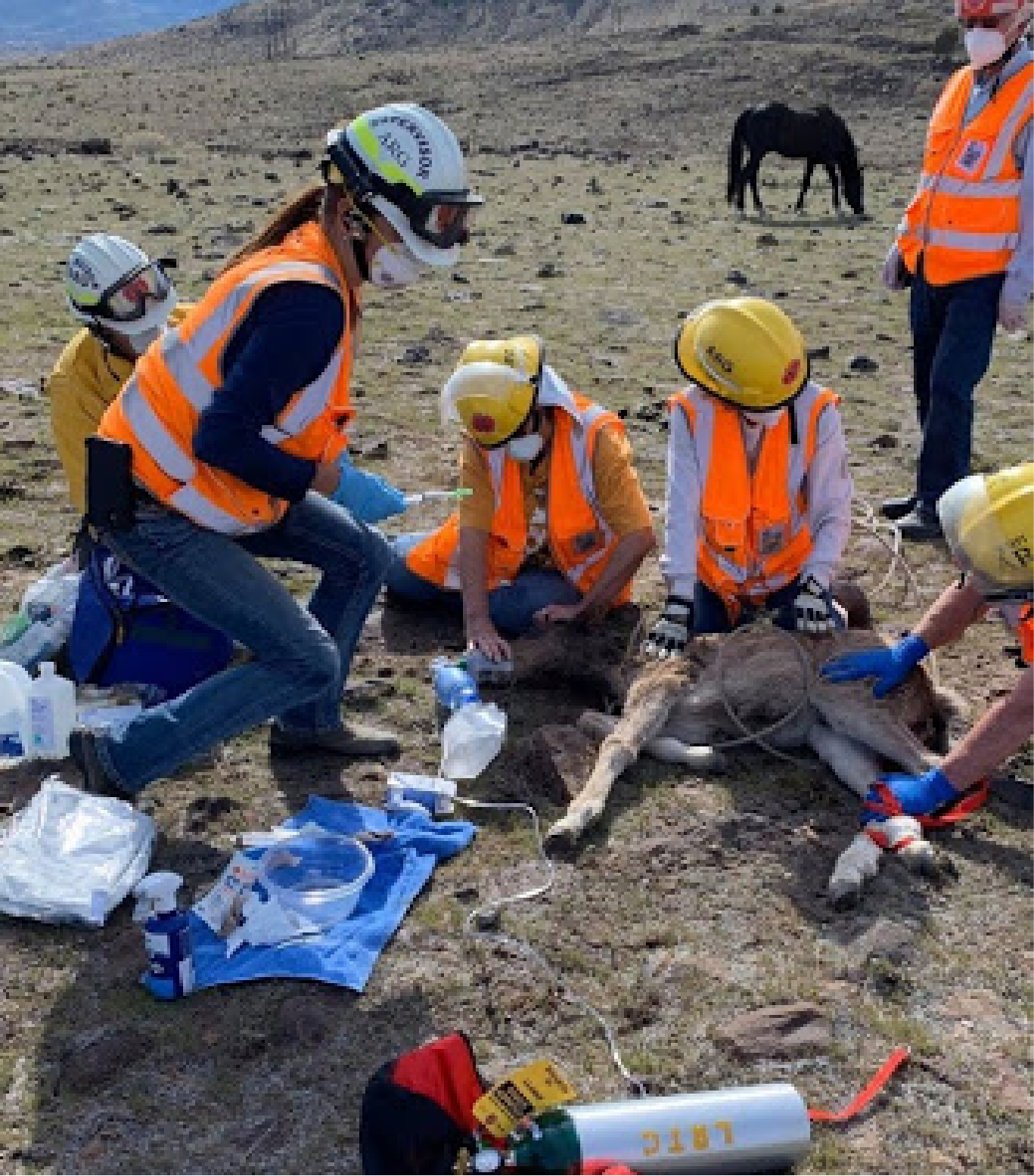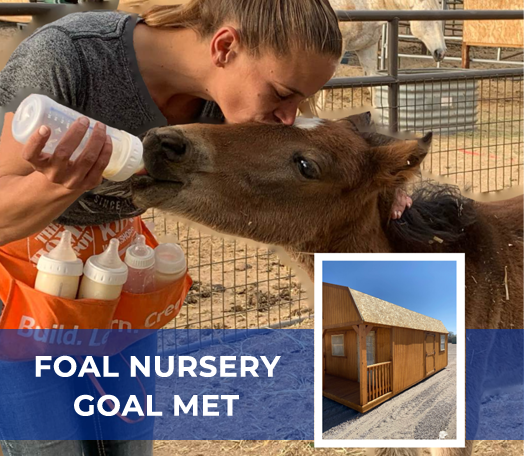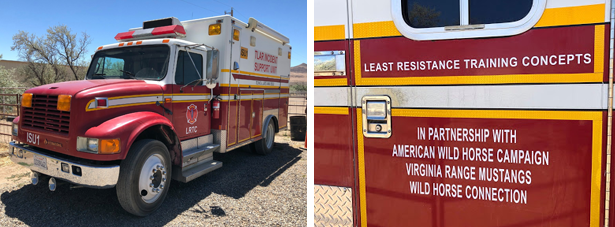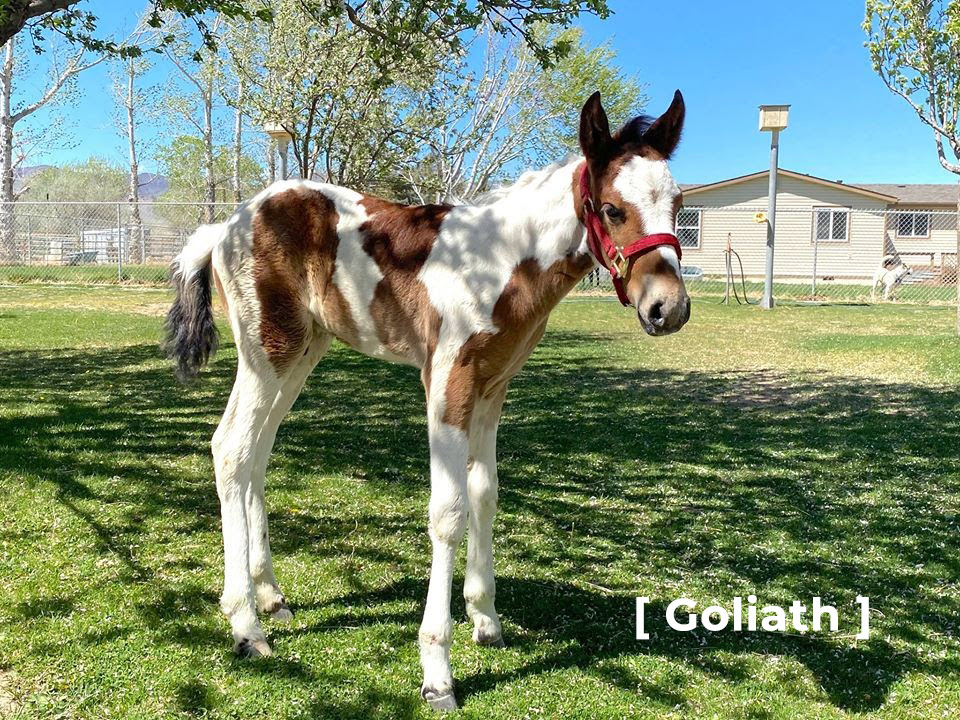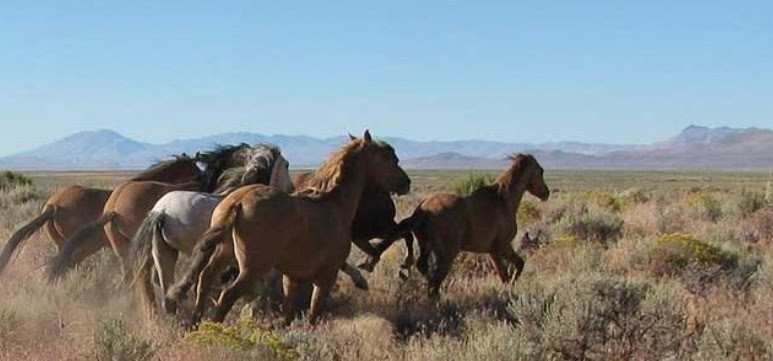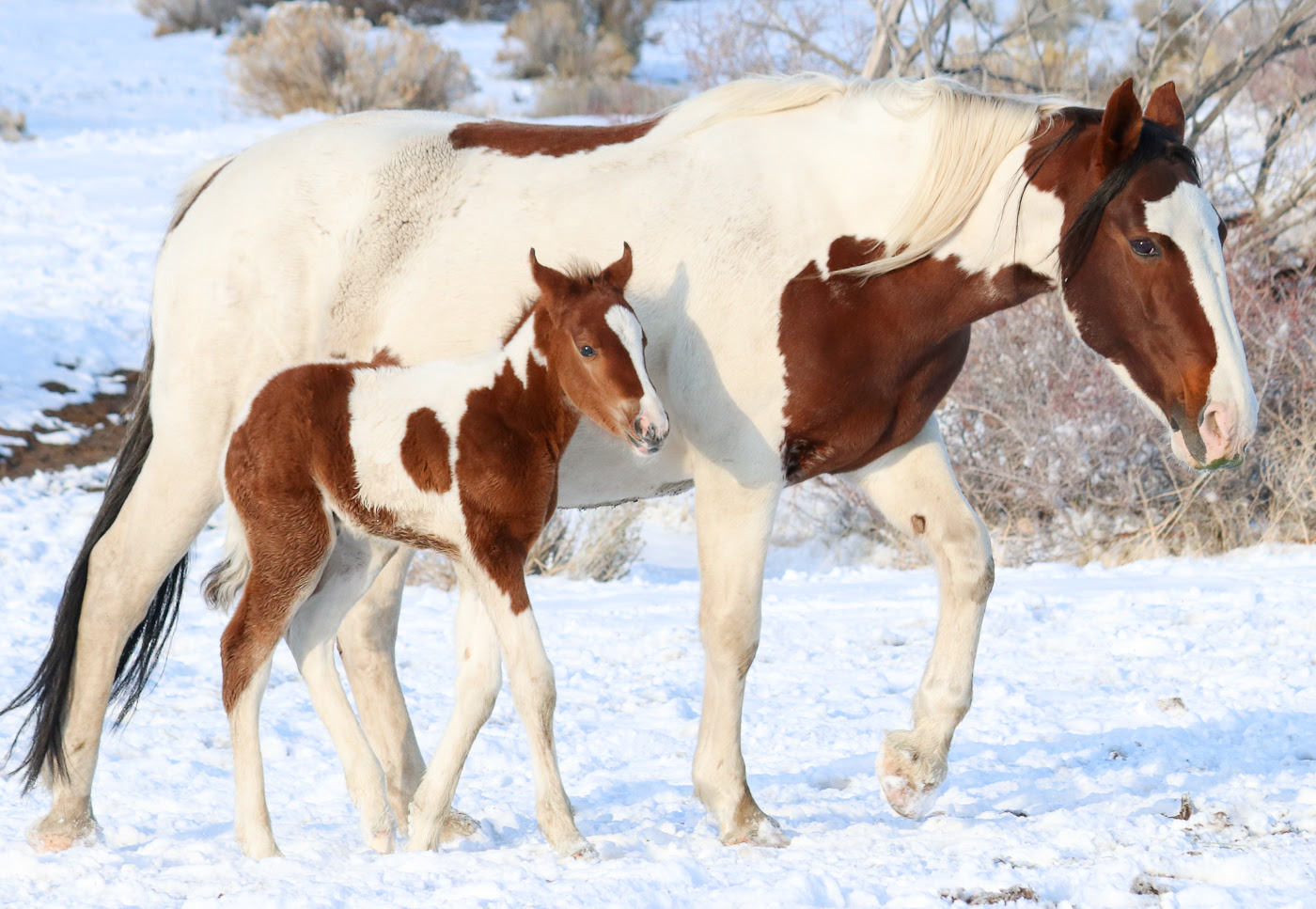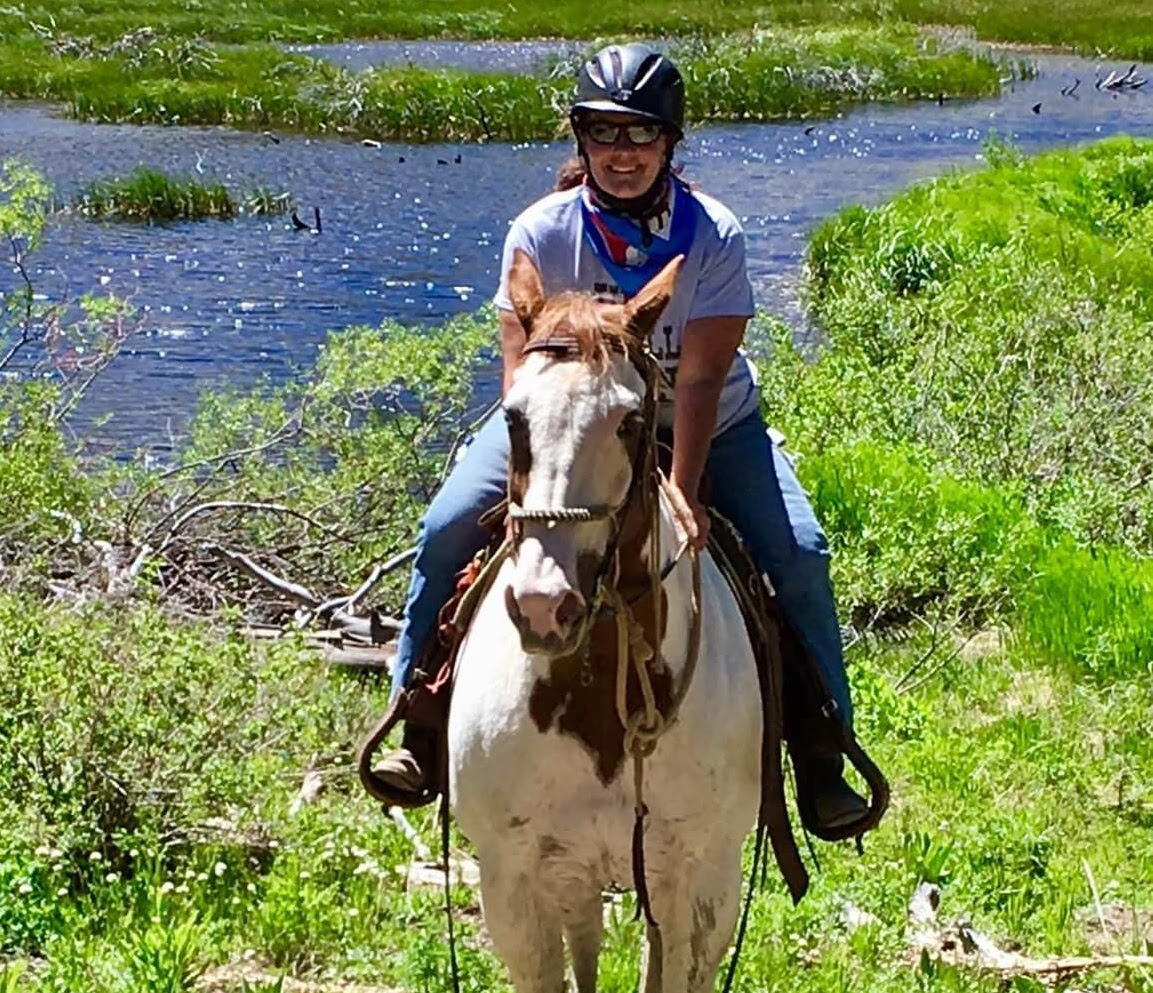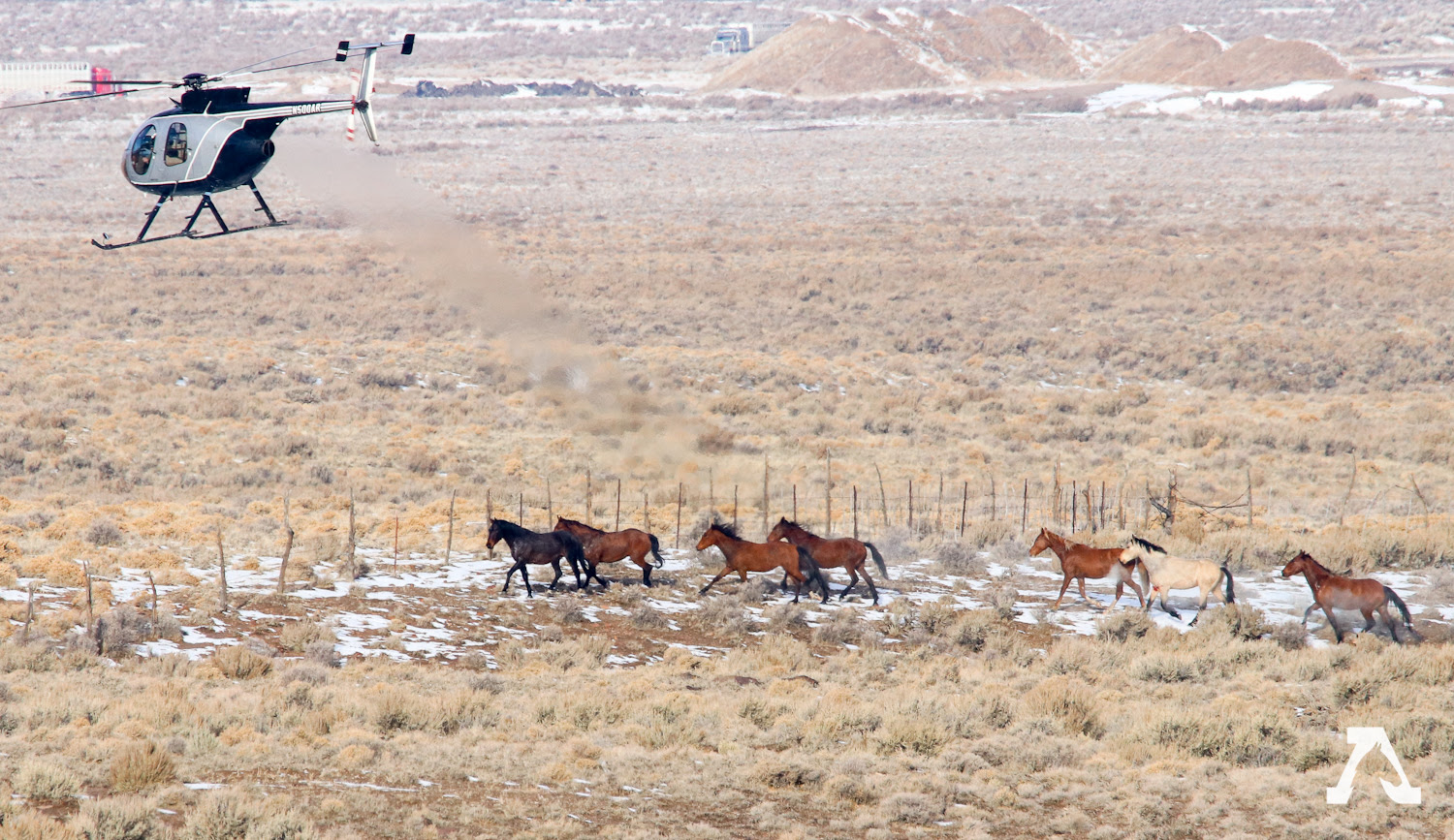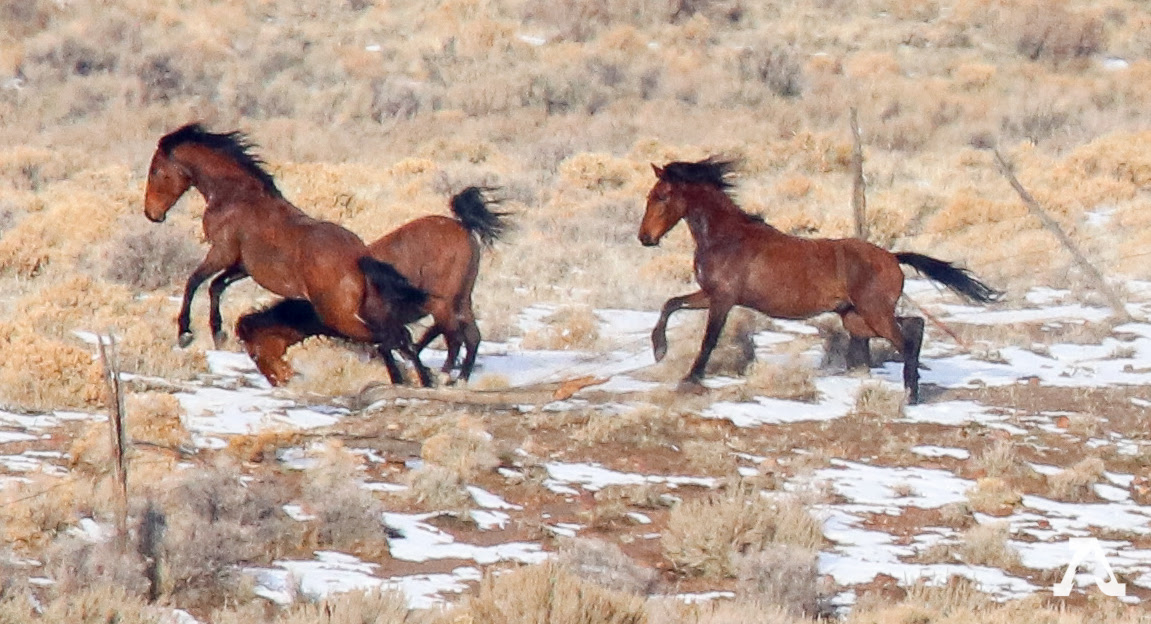
The following is from the American Wild Horse Campaign:
News & Alerts
In case you missed Grace’s update yesterday, we wanted to remind you that RIGHT NOW is your last chance to make sure your voice is heard by the Bureau of Land Management Southern Nevada District Office before today’s comment period deadline.
This summer, the BLM plans to round up and remove more than 5,000 wild horses and burros from public lands beginning on July 1st and ending September of 2020. At the same time, they’re laying the groundwork for these roundups to continue into the fall and next year. One of the large roundups still in the planning stages is in the Nevada Wild Horse Range; a more than 1 million acre Herd Management Area that is on land used by the military for warfare testing and training.
TODAY is our last chance to submit comments to the BLM’s 10-year management plan that would see over half of the wild horses in the Nevada Wild Horse Range rounded up and removed. In addition, wild burros living in the area would be completely eradicated.
 All comments must be submitted by 4:30 p.m. PST TODAY.
All comments must be submitted by 4:30 p.m. PST TODAY.
It is estimated that only 800 wild horses live within the more than 1.3 million acres of public land in this area. Our wild horses, burros — and their tiny vulnerable foals — are depending on us now more than ever… and we have only hours left to speak up for them.
Erica, NOW is the time to let the BLM know you won’t stand for their cruel, costly, and unscientific mass roundup plan. Make your voice heard by today’s deadline at 4:30 p.m. PST.
America’s wild horses need your help today.
The AWHC Team
Read Our Previous Message Below:
Last Saturday marked the official first day of summer, and with it, the beginning of a season that places our iconic wild horses and burros in the cross-hairs of a particularly cruel and inhumane roundup by the Bureau of Land Management (BLM).
This weekend, I know so many of our hearts, heads and screens are saturated with grief, fear and worry. I want you to know, however, that it’s not all bad news on the wild horse front. In fact, there’s cause for hope as we rally together like never before to protect and preserve our beloved wild horses.
I want to share a couple of these hopeful stories with you, but first to ask that you join me in getting your comments in this weekend in opposition to the BLM’s plan to round up over 400 wild horses and burros from the Nevada Wild Horse Range – the nation’s first protected habitat area for mustangs.
URGENT: TWO days left to speak up

This summer’s assault on wild horse and burro herds will be particularly cruel and inhumane — helicopter roundups in the sweltering desert heat will involve tiny, vulnerable foals who risk being literally run to death after miles-long helicopter chases. The BLM plans to round up and remove more than 5,000 federally-protected wild horses and burros from public lands beginning July 1 and ending September of 2020.
At the same time, the BLM is laying the groundwork for the roundups to continue into the fall and next year. One of the large roundups still in the planning stages is in the Nevada Wild Horse Range, a more than 1 million acre Herd Management Area that is on land used by the military for warfare testing and training.
We have only two days left to submit comments to the BLM’s 10-year management plan that would see over half of the wild horses in this range rounded up and removed. In addition, wild burros living in the area would be completely eradicated.
So far, more than 5,700 of you have submitted comments on the BLM’s plan. Now is the time to keep up the pressure, and turn up the volume.
Will you take three minutes now to do these three things? You can take these actions from the safety of your home right now:
- If you haven’t already, TAKE ACTION now to demand that the BLM change its unsustainable, inhumane management plan for the wild mustangs of the Nevada Wild Horse Range.

- Make sure your friends take action also! Nevada’s wild burros and horses need as many voices as possible to speak up before Monday.

 Or, forward this email to a friend!
Or, forward this email to a friend!
- Donate to our Roundup Fund: Today’s donation will keep our team in the field during roundup season, and give us the resources necessary to ensure that our legal team can challenge any attempts to block public observation:


UPDATE: Our Rescue Fund at WorkGood news stories may seem a little scarce these days; but they DO exist, and we
want to share some silver linings (and some VERY adorable foal photos) with you. This will be a tough summer for our vulnerable foals, but in the Virginia Range, where we operate the world’s largest wild horse fertility control program, we’re working with a local coalition of organizations on the ground, and our tireless volunteers to ensure orphaned and injured foals receive the critical care they need so they can be adopted into forever homes.
Your generous contributions to the AWHC Rescue Fund are making this work possible, so thank you.

Thanks to your support, we’ve been able to provide volunteers in the field with life-saving emergency foal kits (see above). We’ve instituted a “red tag” system that keeps the kits stocked with critical medicine and supplies. Foals can crash rapidly, so being fully equipped with Equine IgG Seramune Oral colostrum, saline, Foal Lac milk, antibiotics, Vetericyn wound treatment and enemas often means the difference between life and death on the range. Thank you for helping us support the work of Wild Horse Connection, Least Resistance Training Concepts, LBL Equine Rescue and other local organizations by providing supplies they need to save precious foals in need!!

We are thrilled to announce that thanks to your grassroots support, AWHC was able to present local Nevada group LBL Equine Rescue, with a matching grant that helped them to meet their fundraising goal for a new foal nursery! The nursery will be fully equipped to provide round-the-clock care for foals in critical condition, and will even include sleeping quarters for volunteers working overnight shifts (young foals need to be fed every two hours).

The Least Resistance Training Concepts Large Animal Rescue Team is the busiest in the country. They’re on call 24/7 for every type of emergency, from rescuing horses stuck in cattle guards and barbed wire to coming to the aid of orphaned foals.
We were pleased to make a grant to LRTC from our Rescue Fund that supported the retrofitting of a decommissioned ambulance donated by a kind fire department. Now modified, the ambulance serves as an anchor and transport vehicle for foal rescues, a water rescue unit, support unit for complex large animal rescues and much more. We’re proud to support LRTC with this one-of-a-kind project that is setting the standard for large animal rescue worldwide!
These initiatives — made possible by you and your generous support of the Rescue Fund — have enabled AWHC and our team of volunteers to make life-saving interventions for foals, wild horses and burros.

Finally, allow me to introduce you to some of the fuzzy, thankful faces you’ve helped save this foaling season:


Rustler, Leela, Sinclair, Carte, Stitch, Goliath and all of us here at AWHC want to say a huge THANK YOU, and wish you a safe and happy weekend.
Grace Kuhn,
Communications Director
American Wild Horse Campaign

